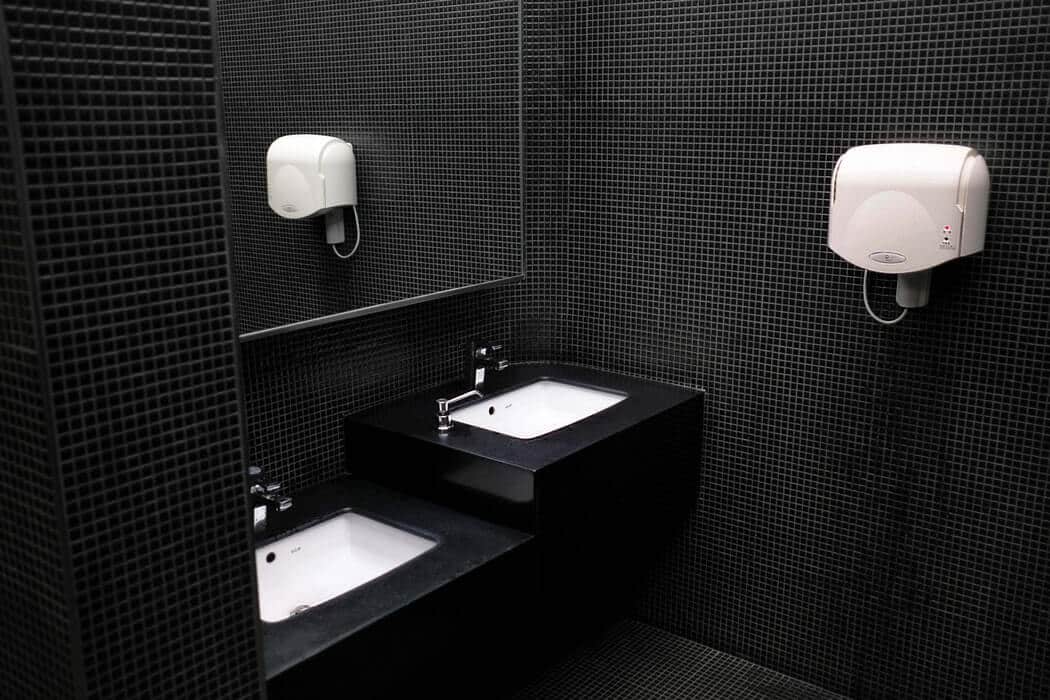The office washroom: How to create safe and inclusive restrooms
By Nick Mason• 5 mins read•February 21, 2019

Over the last few years, the issue of equal and safe office washrooms for people of all genders and identities has received national and global attention. From the issue of an unequal wait time for women’s and men’s office washrooms, otherwise known as the “potty parity”, to inclusive office washrooms that make all feel safe and comfortable, bathrooms are garnering notice.
Let’s take a look at how this issue impacts employees in the workplace and what facilities managers can do to address this.
Landscape
According to the National Center for Transgender Equality, 24% of transgender people had their presence in a bathroom questioned and 12% of transgender people were verbally harassed when trying to access a restroom. In addition, it’s not uncommon to see women waiting in line for the office washroom due to a lack of available stalls in malls, bars, restaurants, and other public places.
This reality has sparked conversation and action among many, and it’s no surprise that corporations are looking for ways to improve their office washroom configuration for all to feel safe and included.
How are companies and organizations addressing this?
All over the country, people are fighting for their right to use the bathroom they feel matches their identity and needs. Companies of all sizes and industries have publicly spoken out about creating more accessible bathrooms for women as well as members of other marginalized groups, particularly those part of the LGBTQ2+ community.
Across the nation, major corporations like Target and Kroger are adopting inclusive bathroom policies in their physical stores. However, these efforts haven’t been met without controversy or negative opinions.
Understanding this issue as a facilities manager
The issue of equal bathrooms is one that has a significant cultural impact and is something that should be taken seriously by facilities managers and workplace leaders.
When thinking about how your company should approach this issue, consider these questions:
-
Am I legally obliged to offer inclusive bathrooms? If so, how do I approach this?
-
How are other companies doing this?
-
How important is it in my workplace?
-
Are we structurally able to add inclusive restrooms?
-
Would inclusive bathrooms be beneficial for future hires or the company culture as a whole?
Knowing what your legal obligations are in addition to how inclusive office washrooms may impact your workplace is crucial to creating the safest environment possible.
Whether you’re looking to move to a new office and considering your restroom options, or are trying to make your existing office restroom safer and inclusive for all, there are several approaches to take.
Let’s take a look at a few ways you can ensure your office restrooms are comfortable for all employees.
Gather employee feedback and ideas

To effectively make changes—and the right changes at that—you need to give employees the opportunity to be involved in the initial planning process. How can you know what they need or want if you don’t incorporate them in the conversation?
As a Facilities Manager, it’s critical to understand how you can leverage your office space to help all employees feel welcome, included, seen, and safe.
Facilities managers can figure out what the best plan of action might be as it pertains to the needs of LGBTQ2+ and female employees and what is available regarding office space. When doing this, it’s important to keep safety and comfort the top priority.
Depending on your company culture, you can approach this in a few ways:
-
Send an anonymous survey that allows employees to give feedback and voice their opinions while protecting their identity and safety.
-
Create a designated email address that employees can send their ideas to.
-
Hold an optional employee meeting with the leadership team that is safe and inclusive.
Keep these things in mind when figuring out the best way to approach gathering feedback:
-
What will the leadership team be on board with? Make sure any options you might present aren’t ones the leadership team won’t support.
-
What format is best? E.g., an anonymous survey, meetings with HR?, etc. It’s important to ensure anyone can provide feedback in a way they feel comfortable with.
-
When do you need feedback by to see that changes are made?
-
Who should be the one to spearhead this initiative?
Every company has its own unique culture, which may influence how you go about collecting employee feedback. Whatever method you choose, be sure to approach this in a way that will make your employees feel secure.
Working with your HR, legal, and management teams and seeking employees input and feedback will help you come up with the right solution that makes sense for all. The solution is going to look different for every company and office space, so it’s essential to have the opinions, guidance, and feedback from employees.
Design for comfort and safety

There’s no question that restrooms should be secure and available for all, but the design of your office restrooms can influence how comfortable they are to use.
If you are searching for new office space or trying to work with your current area, opting for single-occupancy office washrooms is a great option to ensure safety, comfortability, and privacy. Especially for large offices with many employees, adding a few single-occupancy bathrooms may be the answer, which can benefit transgender people in addition to people with limited mobility and people with families.
If single-occupancy bathrooms aren’t an option for your space, universal restrooms can deter feelings of inequality or discomfort among employees.
Including the proper lighting in each restroom can make an impact on comfortability as well as improve safety. Consider adding other elements and features to the bathrooms such as shelves, hooks, feminine hygiene products, and ambient music.
Regardless of how you choose to structure your restrooms, make sure they are safe and convenient for all to use.
Communicate changes with employees
As you work to create safer and more inclusive restrooms for your employees, it’s important for facilities managers to work with the HR team to communicate these updates to employees. Being unified as a company when it comes to these updates is essential to make all employees feel safe and accepted.
Also, incorporating the proper signage is just as important as maintaining cleanliness and a safe environment for employees. Using signs that read “inclusive bathroom” eliminates labels and makes it clear to all that anyone can use that office washroom no matter how they identify. If you’re sticking to a gender-specific bathroom system, keeping employees in the loop on your policies is important.
Regardless of your company’s culture and office dynamics, being open about these changes will ensure everyone is aware of what’s happening. This is also an excellent opportunity for employees to come forward and ask any questions they may have.
Having open conversations about inclusivity in the workplace in general and how it relates to restroom usage can help alleviate any confusion and make room for a more inclusive work environment.
Creating a safe workplace is essential
It’s essential for all employees to feel comfortable, safe, and accepted in the workplace. Facilities managers can help realize physical safe spaces, which in turn makes the work environment better for everyone.
Involving the right individuals and teams from the get-go can help guide change and make the workplace one of inclusion and dignity.
Need help configuring your office space? We can help.
Photo Credits: Tim Mossholder, Pixabay, Headway, Shutterstock, Harry Cunningham,




